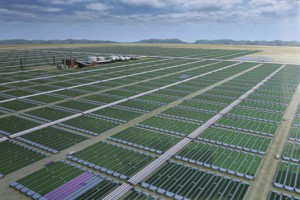Water scarcity is a major problem in many parts of the world affecting quality of life, the environment, industry, and the economies of developing nations. The MENA region is considered as one of the most water-scarce regions of the world. Large scale water management problems are already apparent in the region. While the MENA region’s population is growing steadily, per capita water availability is expected to fall by more than 40-50% by the year 2050. Also, climate change is likely to affect weather and precipitation patterns, and the consequences of which may force the MENA region to more frequent and severe droughts.
Technology trends in desalination industry
Growth in desalination has increased dramatically as countries seek solutions to water scarcity caused by population growth, climate change, pollution and industrial development. In addition, the industry has done much to lower the cost of desalination. Advances in technology have led to increased energy efficiency, and greater economies of scale have also helped lower costs. The majority of new commissioned capacity is seawater desalination.
Existing desalination plants work in one of two ways. Some distil seawater by heating it up to evaporate part of it. They then condense the vapour—a process that requires electricity. The other plants use reverse osmosis. This employs high-pressure pumps to force the water from brine through a membrane that is impermeable to salt. That, too, needs electricity. Even the best reverse osmosis plants require 3.7 kilowatt hours (kWh) of energy to produce 1,000 litres of drinking water.
Recent researches indicate that we can produce that much freshwater with less than 1 kWh of electricity, and no other paid-for source of power is needed. This process is fuelled by concentration gradients of salinity between different vessels of brine. These different salinities are brought about by evaporation.
The process begins by spraying seawater into a shallow, black-bottomed pond, where it absorbs heat from the atmosphere. The resulting evaporation increases the concentration of salt in the water from its natural level of 3.5% to as much as 20%. Low-pressure pumps are then used to pipe this concentrated seawater, along with three other streams of untreated seawater, into the desalting unit.
Perspectives for MENA
Seawater desalination powered by renewable power offers an attractive opportunity for MENA countries to ensure affordable, sustainable and secure freshwater supply. The MENA region has tremendous wind and solar energy potential which can be effectively utilized in desalination processes. Concentrating solar power (CSP) offers an attractive option to power industrial-scale desalination plants that require both high temperature fluids and electricity.
The renewable energy potential is now starting to be more seriously considered in the MENA region, driven by rapidly increasing energy usage, high insolation rates, a young and empowered workforce, and an increasing awareness of the costs of burning natural resources.
The United Arab Emirates, Saudi Arabia, Jordan, Tunisia and Morocco, have ambitious solar power generation goals as well as evolving policies and regulatory frameworks to support these goals. Demonstration projects are being deployed in some countries, while large scale projects are being deployed in others.
Conclusion
Water demand and supply have become an international issue due to several factors: global warming (droughts are more often in arid areas), low annual rainfall, a rise in population rates during last decades, high living standards, and the expansion of industrial and agricultural activities. Freshwater from rivers and groundwater sources are becoming limited and vast reserves of freshwater are located in deep places where economical and geological issues are the main obstacles.
Therefore, it has turned into a competition to get this vital liquid and to find more feasible and economical sources that can ameliorate the great demand that the world is living nowadays and avoid water restrictions and service interruptions to domestic water supply. And, desalination powered by renewable energy resources seems to be an excellent alternative for getting fresh water and electricity in MENA countries.































